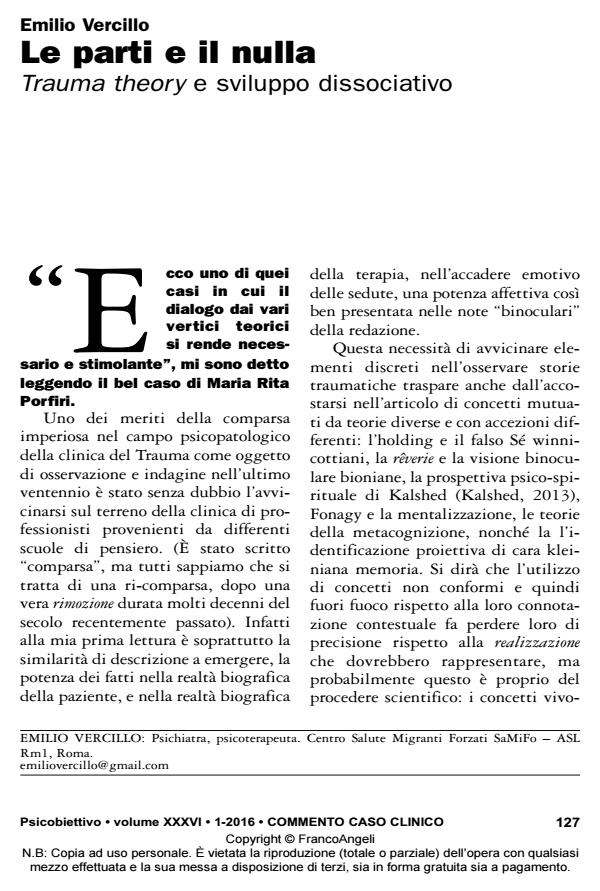Multiplicity and nothingness. Trauma theory and dissociative disorder
Journal title PSICOBIETTIVO
Author/s Emilio Vercillo
Publishing Year 2016 Issue 2016/1
Language Italian Pages 7 P. 127-133 File size 99 KB
DOI 10.3280/PSOB2016-001009
DOI is like a bar code for intellectual property: to have more infomation
click here
Below, you can see the article first page
If you want to buy this article in PDF format, you can do it, following the instructions to buy download credits

FrancoAngeli is member of Publishers International Linking Association, Inc (PILA), a not-for-profit association which run the CrossRef service enabling links to and from online scholarly content.
The clinical case allows to follow the defined progression towards a Dissociative Disorder, starting from its premises. The cold atmosphere of indifference and neglect, the obscure presence of a double (the dead twin), the development of a Submissive Controlling Strategy, and a long series of overt abuses in childhood and adolescence: all these conditions make it impossible to develop an integrated personality, ending up with the creation of separate subsystems in the same person. The author summarizes the internal dynamic of different parts, and emphasizes the non-defensive nature of this psychic structure, which is the inevitable effect of an unfavorable development context, but the only way possible to allow and guarantee survival.
Keywords: Trauma; Neglect; Abuse; Dissociative Disorder; Disorganized Attachment; Therapeutic Relation.
Emilio Vercillo, Le parti e il nulla. Trauma theory e sviluppo dissociativo in "PSICOBIETTIVO" 1/2016, pp 127-133, DOI: 10.3280/PSOB2016-001009